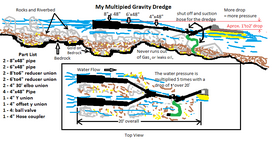yoteassassin
Newbie
- Sep 21, 2012
- 4
- 0
Ok I've looked and I've read and search and read and read some more. I just wana be certain of what I believe it says.
From what I gather, in California, I CAN use a gravity dredge, WITHOUT a permit, and keep the sluice In the water?
Sorry, I know this had been covered, I just want to be sure.
From what I gather, in California, I CAN use a gravity dredge, WITHOUT a permit, and keep the sluice In the water?
Sorry, I know this had been covered, I just want to be sure.
Upvote
0







